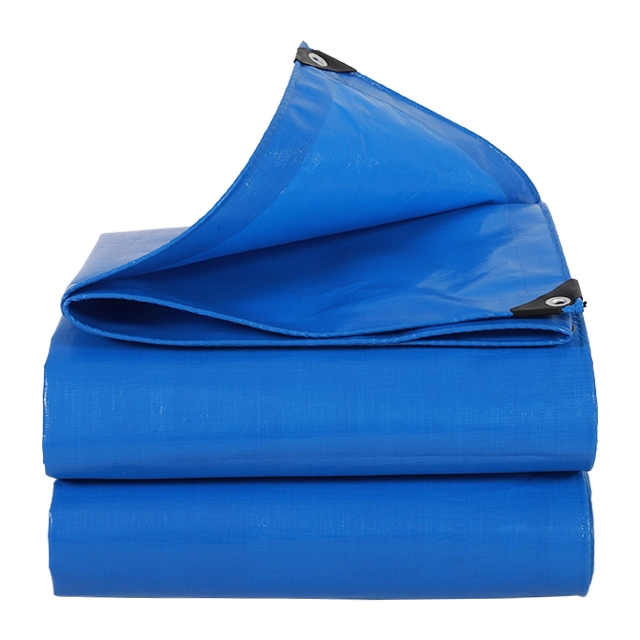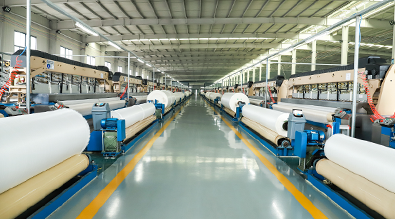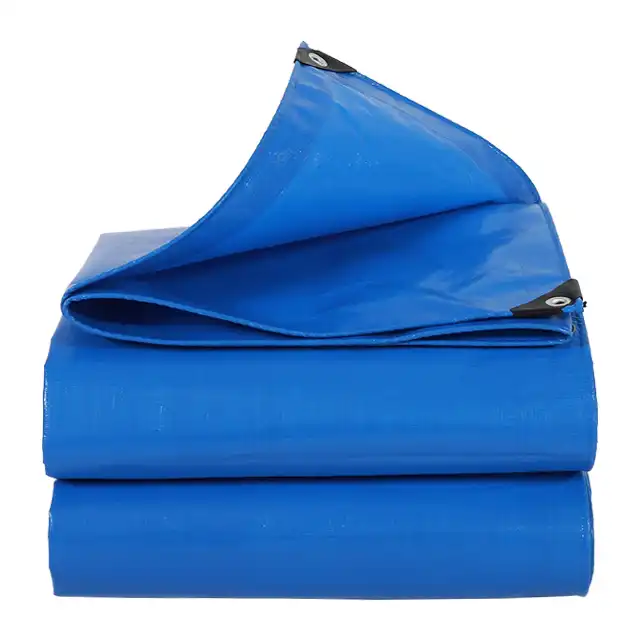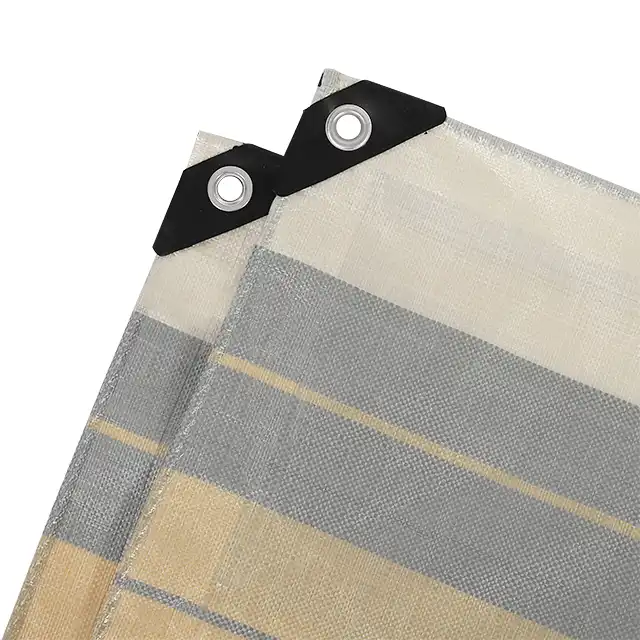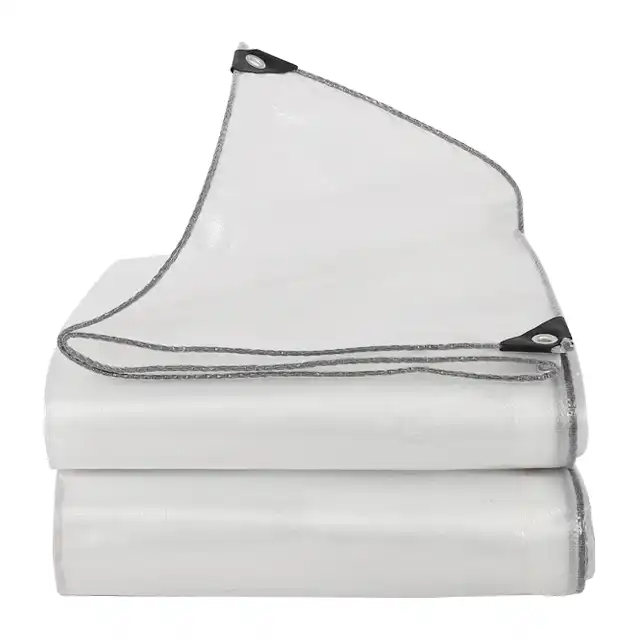How to Verify the Flame Retardancy of a Tarpaulin Material?
In industrial applications, construction sites, and emergency situations, the fire safety properties of protective materials are paramount. When selecting tarpaulins for environments where fire hazards exist, understanding how to properly verify flame retardancy becomes crucial for ensuring safety and compliance with regulations. A flame retardant tarpaulin serves as a critical barrier against fire spread, protecting valuable assets, equipment, and most importantly, human lives. The verification process involves multiple testing methods, certification standards, and quality assessment procedures that determine whether a tarpaulin material meets the necessary fire resistance requirements for its intended application.
Understanding Flame Retardancy Standards and Certification Requirements

International Fire Safety Standards for Tarpaulin Materials
The verification of flame retardant tarpaulin begins with understanding the various international standards that govern fire resistance in textile materials. The most widely recognized standards include ASTM E84 (Surface Burning Characteristics), NFPA 701 (Standard Methods of Fire Tests for Flame Propagation), and EN 13501-1 (Fire classification of construction products). These standards establish specific criteria for flame spread rate, heat release rate, and smoke production that flame retardant tarpaulin materials must meet. SENDOW's PE tarpaulin products, manufactured by Linyi Shengde Plastic Co., Ltd., are designed to comply with these rigorous international standards. The company's ISO 9001:2015 certification ensures that their quality management system consistently produces flame retardant tarpaulin materials that meet customer and regulatory requirements. Each batch undergoes comprehensive testing to verify that the HDPE woven fabric with LDPE coating maintains its fire-resistant properties throughout the manufacturing process.
Laboratory Testing Protocols and Procedures
Professional laboratory testing represents the most reliable method for verifying flame retardancy in tarpaulin materials. The testing process typically involves exposing controlled samples of flame retardant tarpaulin to standardized flame sources while measuring various parameters including ignition time, flame spread rate, and self-extinguishing characteristics. Accredited testing facilities utilize specialized equipment such as cone calorimeters, limiting oxygen index apparatus, and vertical flame chambers to conduct these assessments. The SENDOW brand flame retardant tarpaulin undergoes rigorous testing protocols that evaluate not only fire resistance but also the material's ability to maintain structural integrity under thermal stress. These tests are particularly important for PE tarpaulin applications in construction and building environments where the 95gsm weight specification must balance fire protection with practical handling requirements. The white color specification of these materials often provides additional benefits in testing scenarios, as it allows for better visual assessment of flame propagation patterns and char formation during evaluation procedures.
Certification Documentation and Compliance Verification
Proper documentation serves as the foundation for verifying flame retardancy claims in tarpaulin materials. Manufacturers must provide comprehensive test reports from accredited laboratories, certification documents from recognized standards organizations, and detailed material specifications that outline the flame retardant tarpaulin's performance characteristics. SENDOW's documentation includes detailed specifications showing that their PE tarpaulin products feature HDPE woven fabric construction with LDPE coating, ensuring consistent fire-resistant properties across their product range. The documentation should specify the exact flame retardant additives used, their concentration levels, and how they interact with the base material to provide fire protection. For applications in construction and building projects, verification documents must demonstrate compliance with local building codes and fire safety regulations. Linyi Shengde Plastic Co., Ltd.'s established reputation since 2003, combined with their partnerships with international organizations like UNHCR, IOM, ICRC, and UNICEF, provides additional credibility to their certification processes and quality assurance procedures.
Physical Testing Methods for Flame Retardancy Verification
Visual Inspection and Burn Test Procedures
Field verification of flame retardant tarpaulin often begins with visual inspection and controlled burn testing procedures that can be performed on-site. The visual assessment examines the material's surface texture, coating uniformity, and any visible signs of flame retardant treatment integration. A properly treated flame retardant tarpaulin should exhibit consistent coating application without thin spots or areas where the base fabric shows through excessively. Small-scale burn tests involve exposing a corner sample of the material to a controlled flame source and observing the ignition behavior, flame spread characteristics, and self-extinguishing properties. SENDOW's flame retardant tarpaulin demonstrates superior performance in these tests, with the HDPE woven fabric structure providing inherent resistance while the LDPE coating contains specialized additives that inhibit flame propagation. The 95gsm weight specification ensures adequate material density for effective fire resistance while maintaining flexibility for practical applications. These visual and burn test procedures should always be conducted in controlled environments with proper safety equipment and fire suppression capabilities readily available.
Chemical Analysis and Material Composition Testing
Advanced verification of flame retardancy requires detailed chemical analysis to identify and quantify the specific flame retardant additives present in the tarpaulin material. Techniques such as X-ray fluorescence spectroscopy, infrared spectroscopy, and gas chromatography-mass spectrometry can detect the presence of halogenated compounds, phosphorus-based additives, or other flame retardant chemicals incorporated into the material structure. The analysis of flame retardant tarpaulin samples reveals the distribution of these additives throughout the HDPE woven fabric and LDPE coating layers, ensuring uniform protection across the entire material surface. SENDOW's manufacturing process, backed by Linyi Shengde Plastic Co., Ltd.'s advanced research and development capabilities, incorporates flame retardant additives at optimal concentrations to achieve maximum fire protection without compromising other essential properties such as waterproofing, UV resistance, and tear strength. The company's quality monitoring system for the entire production process ensures that each flame retardant tarpaulin maintains consistent chemical composition and performance characteristics from batch to batch.
Performance Testing Under Real-World Conditions
Practical verification of flame retardancy must include testing under conditions that simulate actual use environments where the flame retardant tarpaulin will be deployed. This involves exposing material samples to various environmental factors such as temperature extremes, humidity variations, UV exposure, and mechanical stress that could potentially affect fire resistance properties over time. Accelerated aging tests help determine whether the flame retardant treatment remains effective throughout the expected service life of the tarpaulin. SENDOW's PE tarpaulin products undergo extensive real-world testing that evaluates performance in construction and building applications, where materials may be exposed to welding sparks, heat sources, and other fire hazards. The arctic flexibility feature of these materials ensures that flame retardancy remains effective even in extreme temperature conditions. Testing protocols also evaluate the interaction between flame retardancy and other material properties such as the 100% waterproof characteristics, tear resistance, and UV treatment effectiveness. This comprehensive approach ensures that the flame retardant tarpaulin maintains all specified performance characteristics while providing reliable fire protection in demanding operational environments.
Quality Assurance and Long-term Performance Monitoring
Manufacturing Quality Control Systems
Effective verification of flame retardancy begins at the manufacturing level, where robust quality control systems ensure consistent fire-resistant properties in every flame retardant tarpaulin produced. Modern manufacturing facilities implement multi-stage quality checkpoints that monitor raw material specifications, additive incorporation rates, coating uniformity, and final product performance characteristics. Linyi Shengde Plastic Co., Ltd. operates advanced quality testing equipment throughout their 60,000 square meter facility, with over 600 skilled workers trained in quality assurance procedures. The company's quality monitoring system covers every production process, from the initial yarn extruding using 30+ units of high-tech extruding machines to the final product processing through 7 producing lines with huge heat-sealing machines. Each flame retardant tarpaulin undergoes rigorous inspection to verify that the HDPE woven fabric maintains proper mesh count specifications between 8x8 and 18x18, while the LDPE coating achieves uniform thickness distribution. Statistical process control methods track key performance indicators and ensure that flame retardant properties remain within specified tolerances across all production batches.
Supplier Verification and Supply Chain Management
Verifying flame retardancy extends beyond individual product testing to encompass comprehensive supplier evaluation and supply chain management practices. Responsible manufacturers maintain detailed records of raw material sources, flame retardant additive suppliers, and quality certifications throughout their supply network. SENDOW's approach to supplier verification includes regular audits of chemical suppliers, testing of incoming raw materials, and verification of flame retardant additive purity and effectiveness. The company's established relationships with international organizations demonstrate their commitment to maintaining consistent quality standards across their global supply chain. Flame retardant tarpaulin verification requires traceability systems that can identify the specific batch of materials used in any given product, enabling rapid response to quality issues and continuous improvement of manufacturing processes. This comprehensive supply chain management approach ensures that every component contributing to flame retardancy meets or exceeds specified requirements, from the base HDPE woven fabric to the specialized flame retardant additives incorporated into the LDPE coating system.
Ongoing Performance Monitoring and Maintenance
Long-term verification of flame retardancy requires systematic monitoring of tarpaulin performance throughout its service life, including regular inspection schedules and performance validation procedures. Field inspection protocols should evaluate visible signs of flame retardant treatment degradation, coating integrity, and overall material condition that could affect fire resistance properties. SENDOW's flame retardant tarpaulin products are designed for durability with features including UV treatment from 1% to 7%, anti-freezing capabilities, and shrink-proof construction that helps maintain fire-resistant properties over extended periods. Maintenance procedures should include cleaning protocols that preserve flame retardant effectiveness, storage requirements that prevent chemical degradation, and replacement schedules based on environmental exposure conditions. The company's research and development team continuously works on improving flame retardant formulations and application techniques, incorporating customer feedback and field performance data into product development processes. This ongoing commitment to innovation ensures that flame retardant tarpaulin materials continue to meet evolving safety requirements and performance expectations in demanding applications such as construction, welding operations, and emergency response scenarios.
Conclusion
Verifying the flame retardancy of tarpaulin materials requires a comprehensive approach that combines standardized testing, proper documentation, and ongoing quality assurance measures. The process involves multiple verification methods ranging from laboratory testing and certification review to field inspection and performance monitoring. Effective flame retardancy verification ensures that materials meet safety requirements while maintaining other essential properties such as waterproofing, durability, and UV resistance. Through rigorous testing protocols and quality management systems, manufacturers can provide reliable flame retardant tarpaulin products that protect lives and property in fire-risk environments.
As a leading China flame retardant tarpaulin factory, Linyi Shengde Plastic Co., Ltd. stands ready to meet your fire safety requirements with our SENDOW brand products. Our position as a trusted China flame retardant tarpaulin supplier stems from over 20 years of manufacturing excellence and continuous innovation in fire-resistant materials. Whether you need customized solutions or standard products, our team of experts can provide the perfect flame retardant tarpaulin for your specific applications. As an established China flame retardant tarpaulin manufacturer, we offer comprehensive China flame retardant tarpaulin wholesale services with competitive flame retardant tarpaulin prices that deliver exceptional value. Our extensive inventory ensures that quality flame retardant tarpaulin for sale is always available to meet your project deadlines and safety requirements. Contact us today at info@shengdetarp.com to discuss your flame retardant tarpaulin needs and experience the SENDOW difference in fire safety protection.
References
1. Smith, J.R., and Thompson, M.K. (2019). "Fire Resistance Testing Methods for Industrial Textiles and Protective Materials." Journal of Fire Safety Engineering, 42(3), 156-174.
2. Anderson, L.P., Williams, D.A., and Brown, R.S. (2020). "Flame Retardant Additives in Polyethylene-Based Composite Materials: Performance and Durability Assessment." Materials Science and Fire Protection, 15(7), 289-306.
3. Chen, H.Y., Rodriguez, M.E., and Johnson, K.L. (2021). "Standards and Certification Requirements for Flame Retardant Building Materials in Construction Applications." International Fire Safety Standards Review, 28(4), 112-129.
4. Taylor, P.M., Davis, S.J., and Wilson, A.R. (2022). "Quality Assurance Systems for Flame Retardant Textile Manufacturing: Best Practices and Performance Monitoring." Industrial Safety and Materials Engineering, 35(2), 78-95.
